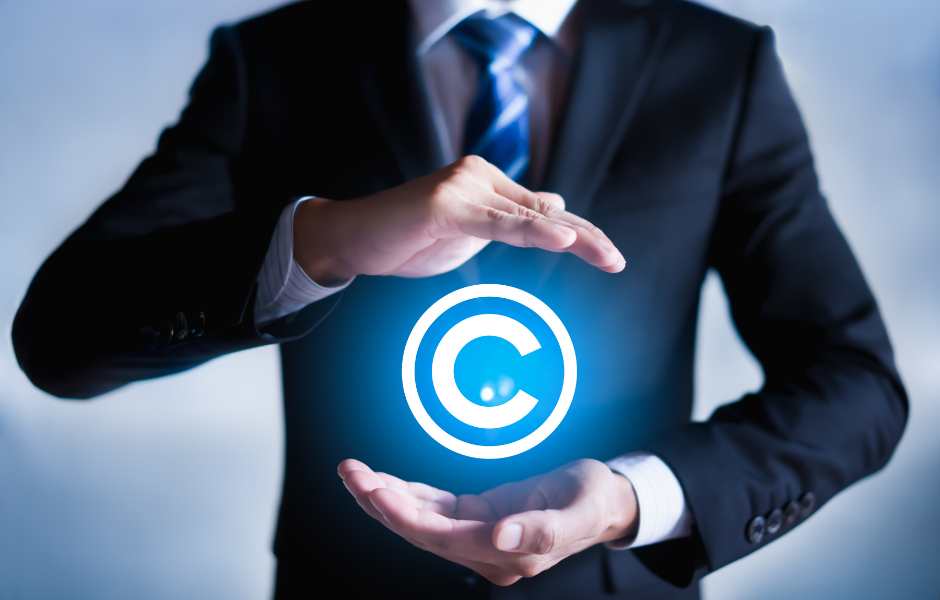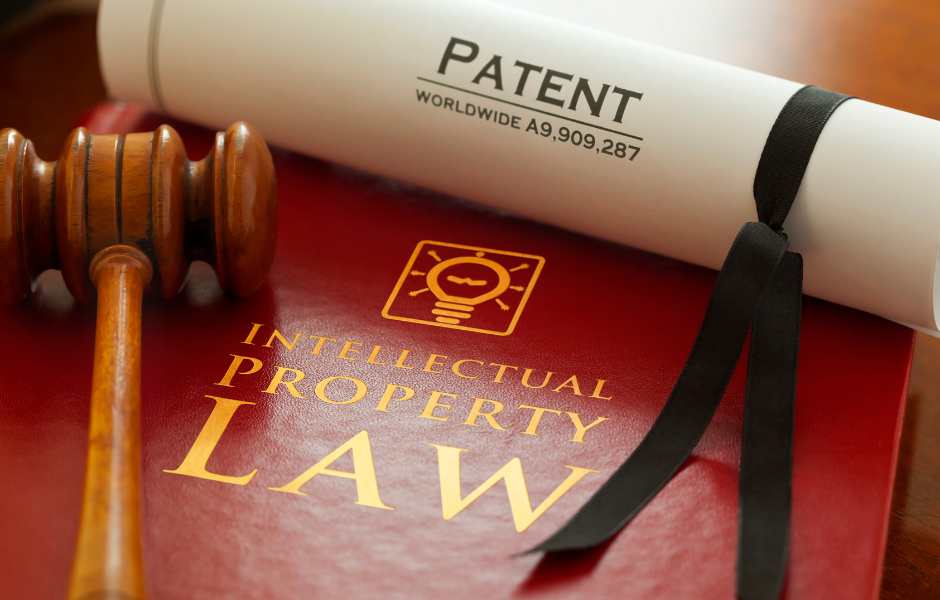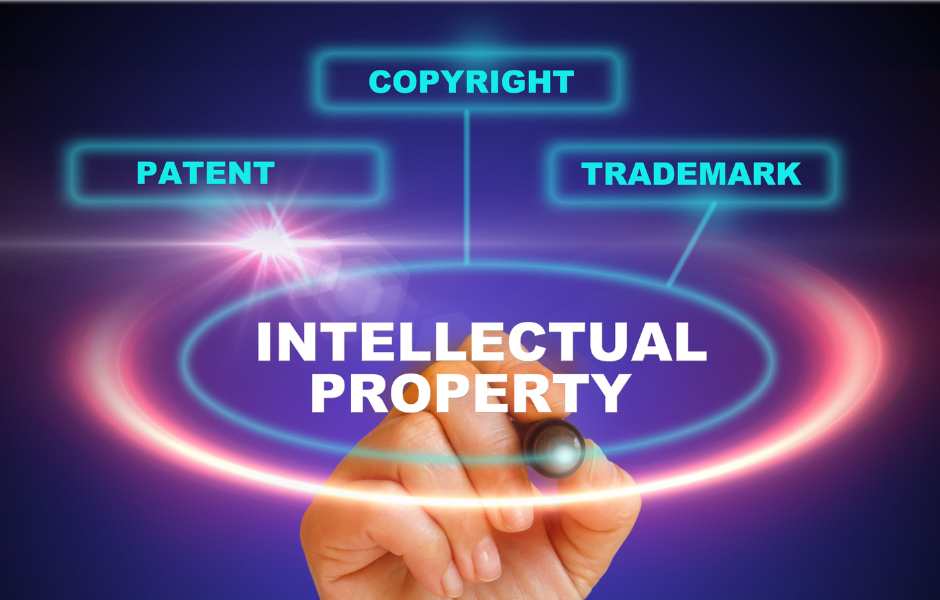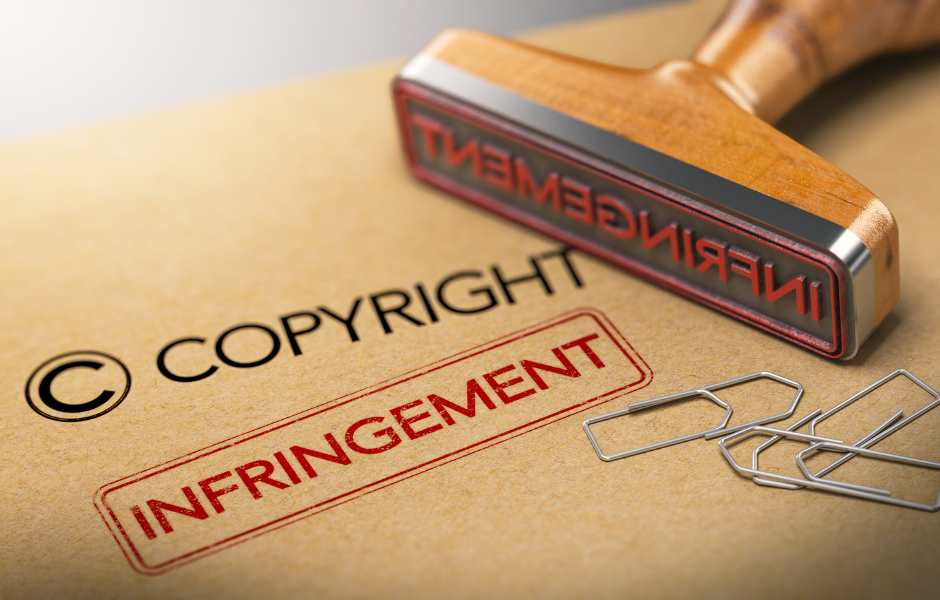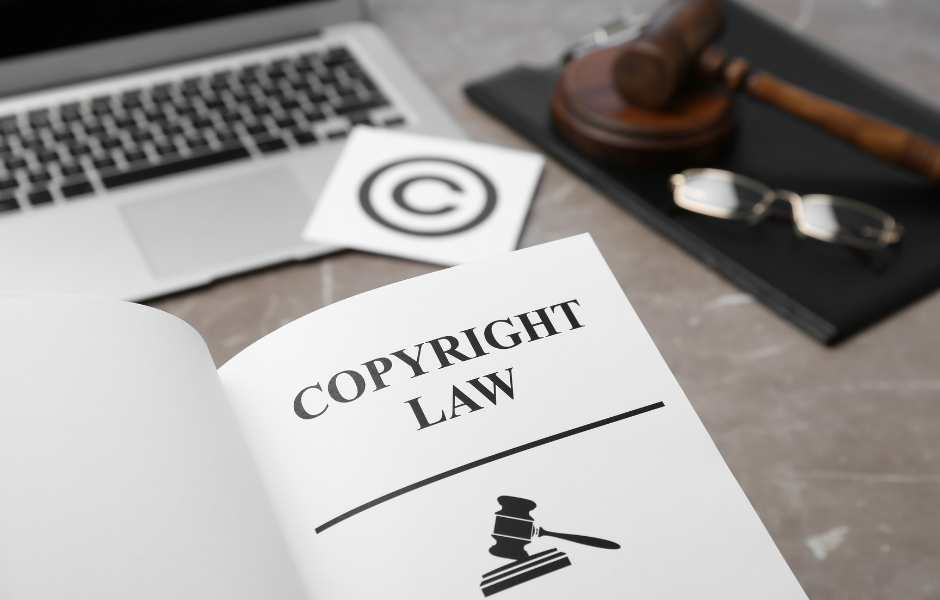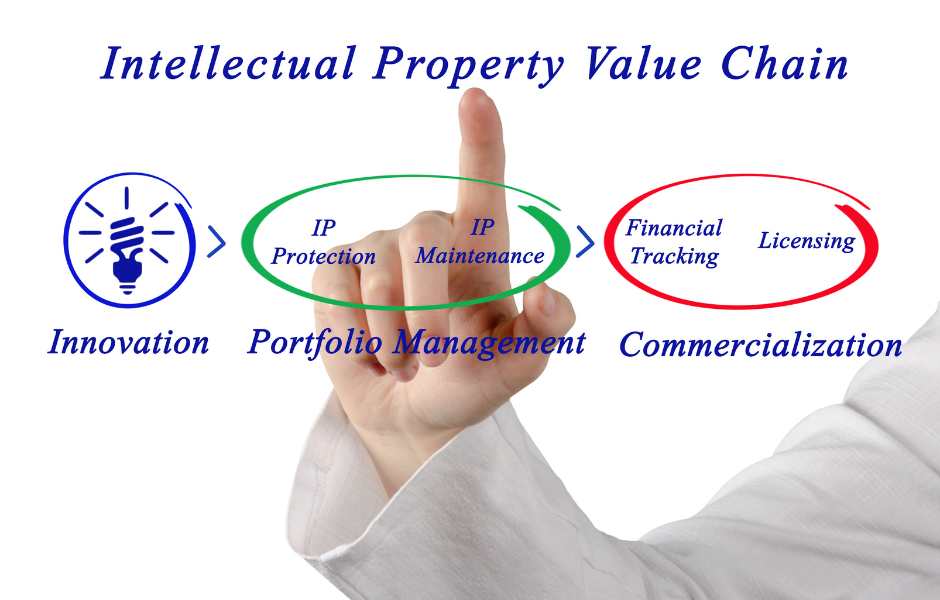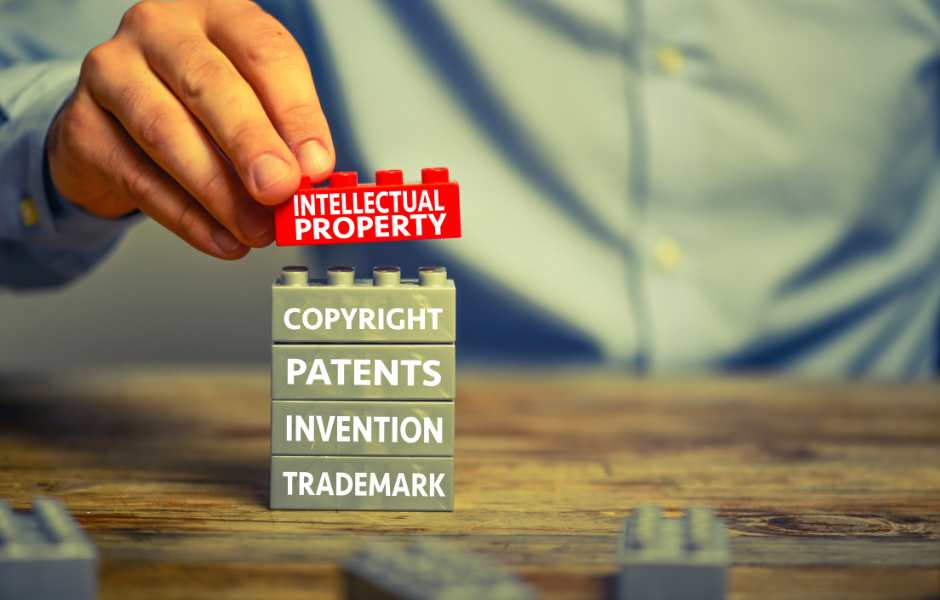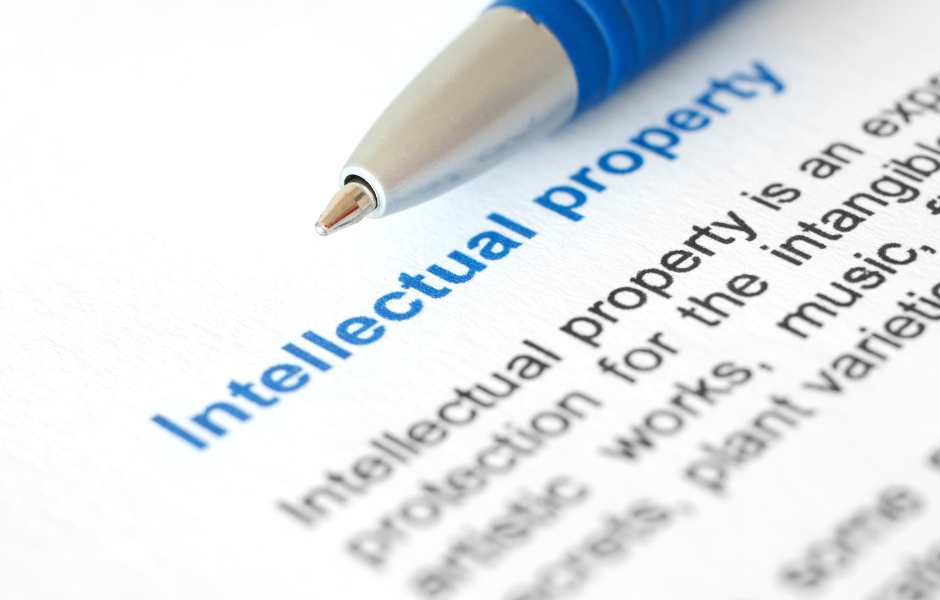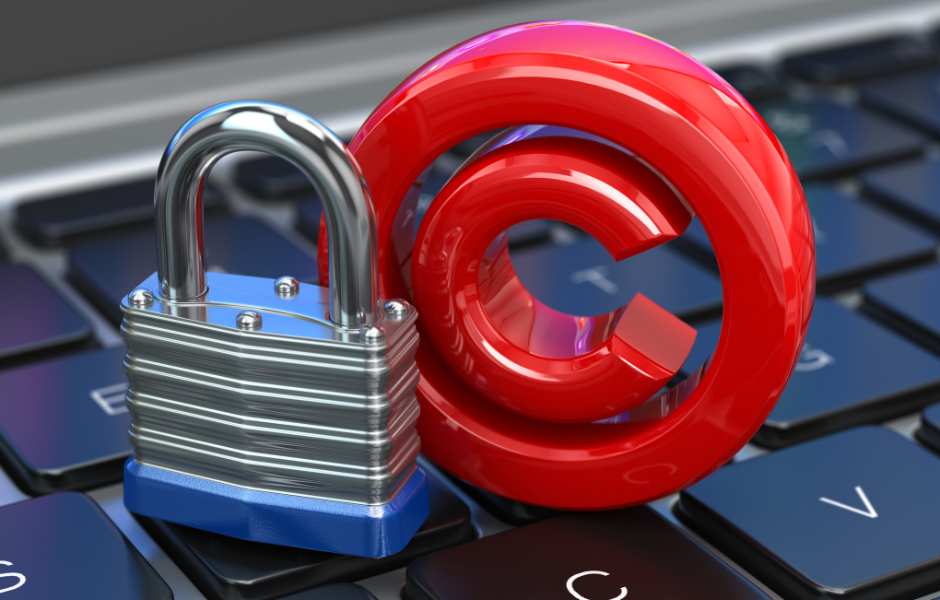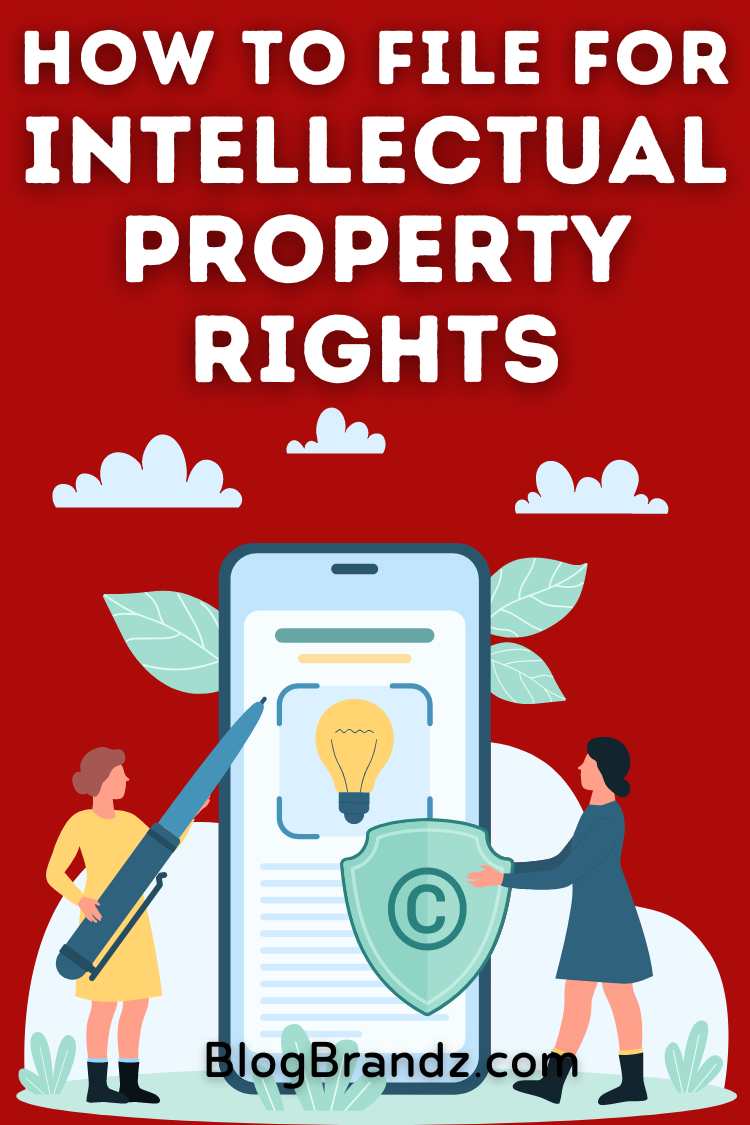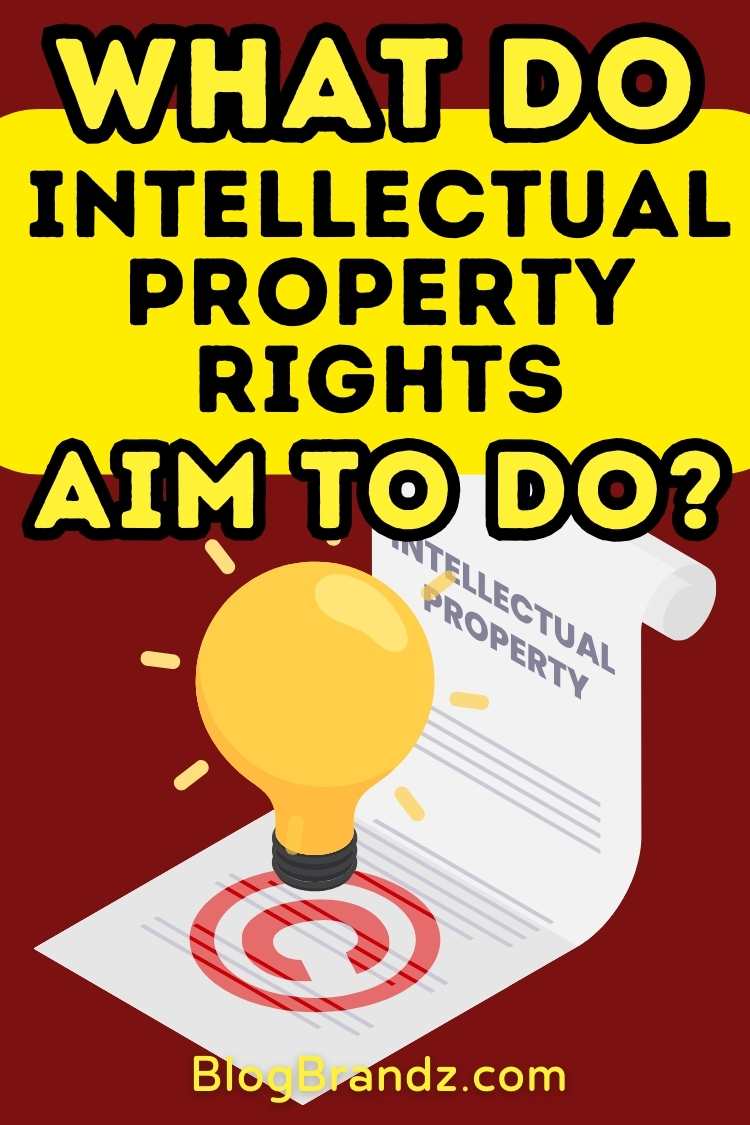Learn how to protect your innovations and navigate the world of IP law with this Intellectual Property Rights (IPR) primer for entrepreneurs and creators.
Understanding intellectual property rights (IPR) is crucial for creators and entrepreneurs who want to protect their innovations and creations, differentiate their products or services from competitors, and create value for their businesses.
Contents
- What are intellectual property rights?
- Origin and development of intellectual property rights
- What do intellectual property rights aim to do?
- How do intellectual property rights drive innovation?
- What are the different types of intellectual property rights?
- How long do intellectual property rights last?
- How to get intellectual property rights
- How to deal with infringement of intellectual property rights
- What is the intellectual property value chain?
- International intellectual property rights considerations
- What are some IPR challenges for entrepreneurs?
- Intellectual property rights strategies for entrepreneurs
- What are employee intellectual property rights?
- How to sell your IPR as a creator or entrepreneur
- Generative AI and intellectual property rights
- Intellectual property rights courses & services
What are intellectual property rights?
Intellectual property rights, meaning the legal protection granted to creators and inventors for their original works and inventions, provide a legal framework that protects and rewards creations of the mind.
Grants of intellectual property rights to the inventor or owner provide exclusive rights to use, make, and sell their inventions, literary and artistic works, designs, symbols, names, and images used in commerce for a limited period.
Origin and development of intellectual property rights
The origin and development of IP rights reflect society’s recognition of the value of intellectual creations and the need to protect and incentivize innovation and creativity.
The concept of intellectual property rights has evolved over centuries, with roots tracing back to ancient civilizations. Here is a brief overview of the origin and development of IP rights:
- Ancient Times: The earliest known forms of IP protection can be traced back to ancient civilizations such as Mesopotamia and Egypt, where rulers granted exclusive rights to individuals for their inventions or artistic works.
- Roman Law: Roman law recognized the concept of “jus imaginum,” which granted individuals the right to protect their likeness and reputation.
- Medieval Europe: Guilds and trade associations in medieval Europe developed rules and regulations to protect the skills and knowledge of their members, laying the foundation for modern IP rights.
- The Statute of Monopolies (1624): This English law marked the beginning of modern patent law by limiting the power of the Crown to grant monopolies and establishing the first formal system for granting patents.
- The Statute of Anne (1710): This English law, also known as the Copyright Act 1710, was the first statute to provide for copyright protection, granting authors exclusive rights to their works for a limited time.
- Industrial Revolution: The Industrial Revolution significantly increased innovation and the need for stronger IP protection. Countries established formal patent and copyright laws to encourage innovation and protect inventors and creators.
- International Treaties: The late 19th and early 20th centuries saw the development of international treaties and agreements like the Paris Convention for the Protection of Industrial Property (1883) and the Berne Convention for the Protection of Literary and Artistic Works (1886).
- Modern Era: In the 20th and 21st centuries, the scope of IP protection has expanded to include new forms of creativity and innovation, such as software, biotechnology, and digital content. Countries continue to update their IP laws to address new challenges and technologies in the digital age.
What do intellectual property rights aim to do?
Intellectual property rights protect and incentivize creators and inventors by granting them exclusive rights to their creations or inventions for a specified period.
Why are intellectual property rights important? The importance of intellectual property rights lies in their ability to incentivize innovation and protect intellectual creations.
What do intellectual property rights do? IP rights foster economic growth by providing creators and inventors with incentives to develop and share their work without fear of others copying or using it without permission.
Here are some benefits of protecting intellectual property rights:
- Encouraging Innovation and Creativity: By granting creators and inventors exclusive rights to their creations, IP rights provide incentives for individuals and organizations to invest time, effort, and resources into developing new ideas, products, and services.
- Fostering Economic Growth: IP rights promote economic growth by stimulating innovation, which can lead to the creation of new industries, job opportunities, and increased competition.
- Protecting Creators and Inventors: IP rights protect the interests of creators and inventors by preventing others from copying, reproducing, or using their creations without permission, thus enabling them to benefit financially from their work.
- Promoting Fair Competition: IP rights help ensure fair competition by preventing others from unfairly benefiting from someone else’s innovative or creative efforts.
- Encouraging Investment in Research and Development: IP rights provide a framework for individuals and organizations to protect their investments in research and development, encouraging them to continue innovating and developing new technologies and products.
Protection of intellectual property rights is essential for fostering innovation, creativity, and economic growth by providing creators and inventors with the necessary incentives and protections for their work.
How do intellectual property rights drive innovation?
Intellectual property rights (IPR) drive innovation in several ways:
- Incentivizing Investment: IP rights provide creators and inventors with exclusive rights to their creations, rewarding them for their innovation and encouraging investment in research and development.
- Facilitating Collaboration: IP rights enable creators and inventors to collaborate with others while protecting their ideas and inventions, leading to the sharing of knowledge and the development of new technologies.
- Encouraging Competition: IP rights foster competition by allowing creators and inventors to protect their innovations from being copied or used without permission, encouraging others to develop new and innovative products.
- Building Brand Value: Trademarks and copyrights establish and protect brand recognition and loyalty among customers. Trademarks can distinguish products and services from competitors, while copyrights protect original creative works, both contributing to the overall value of a brand.
- Attracting Investment: Investors often look for strong intellectual property rights protection as it demonstrates the uniqueness and potential value of your business. Strong IP rights can attract investment from companies and investors looking to capitalize on innovative ideas and technologies, leading to the development of new products and services.
- Preventing Litigation: Properly managing intellectual property rights can help prevent costly legal disputes and litigation, as it ensures that businesses have the necessary protections to defend their innovations and creations against unauthorized use or infringement.
- Spurring Technological Advancement: IP rights promote the development of new technologies by rewarding innovation and encouraging continuous improvement and advancement in various fields.
Intellectual property rights drive innovation by giving creators and inventors the incentive and protection to develop and commercialize new ideas and inventions.
What are the different types of intellectual property rights?
There are several types of intellectual property rights (IPR), each designed to protect different types of creations. The main types of IP rights include:
- Patents: Patents protect inventions and new technological processes, granting the inventor exclusive rights to use, make, and sell the invention for a limited period (usually 20 years).
- Copyrights: Copyrights protect original works of authorship, such as books, music, paintings, and software. Copyright gives the creator exclusive rights to reproduce, distribute, perform, and display their work.
- Trademarks: Trademarks protect symbols, names, and slogans used to identify and distinguish goods or services in the marketplace. Trademark rights prevent others from using similar marks that could confuse consumers.
- Trade Secrets: Trade secrets protect confidential business information, such as formulas, processes, or customer lists, that give a business a competitive advantage. Unlike patents, trade secrets have no expiration date and protection lasts as long as the information remains secret.
- Industrial Designs: Industrial designs protect the visual design of objects, such as the shape, surface, or ornamentation of a product. Industrial design rights prevent others from making or selling products with a similar appearance.
- Plant Variety Rights: Plant variety rights protect new varieties of plants that are distinct, uniform, and stable. These rights give breeders exclusive control over the propagation and sale of the new variety for a limited period.
- Geographical Indications: Geographical indications (GIs) identify products as originating from a particular place and having qualities, reputation, or characteristics attributable to that place. GIs protect the reputation of products associated with specific regions.
Each type of IP right is governed by specific laws and regulations that vary from country to country.
How long do intellectual property rights last?
The duration of intellectual property rights varies depending on the type of IP and the country in which protection is sought. Here are some general guidelines:
- Patents: In most countries, patents are granted for 20 years from the filing date of the patent application. However, this period can vary depending on the type of patent and the country.
- Copyrights: Copyright protection typically lasts for the author’s life plus an additional 50 to 100 years, depending on the country and the type of work. In some cases, copyright protection may last for a fixed period, such as 70 years from the publication date.
- Trademarks: Trademark registration can be renewed indefinitely, as long as the trademark is used in commerce and the renewal fees are paid.
- Trade Secrets: Trade secrets have no expiration date and can be protected indefinitely, as long as the information remains secret and efforts are made to maintain its confidentiality.
- Industrial Designs: The duration of protection for industrial designs varies by country but is typically between 10 to 25 years from the registration date.
However, these are general guidelines, and the specific duration of IP rights can vary depending on the laws of the country in which protection is sought. It’s wise to consult an intellectual property rights attorney for information regarding your specific IPR.
How to get intellectual property rights
How to file for intellectual property rights? To obtain intellectual property rights, you typically need to follow these general steps:
- Identify Your IP: Determine what type of IP protection is appropriate for your creation or invention (e.g., patent, copyright, trademark).
- Conduct a Search: This will ensure that your IP is not already protected by someone else.
- File an Application: Apply with the relevant IP office (e.g., United States Patent and Trademark Office, Copyright Office) along with the required fees and documentation.
- Examination Process: Your application will undergo an examination process by the IP office to determine if it meets the requirements for protection.
- Publication: Once your IP is approved, it will be published in the official IP register.
- Maintenance and Renewal: Maintain your IPR by paying any required maintenance fees and renewals to keep them in force.
- Enforcement: If someone infringes on your IPR, you may need to take legal action to enforce them.
It’s important to note that the process for obtaining IPR can vary depending on the type of IP and the country in which you seek protection.
It’s advisable to seek legal advice from an intellectual property rights lawyer to understand the specific requirements and procedures that apply to your situation.
How to deal with infringement of intellectual property rights
Dealing with violation of copyright or infringement of intellectual property rights involves several key steps:
- Identify the Infringement: Identify the violation of intellectual property rights by someone else’s use of your protected work without permission.
- Gather Evidence: Collect evidence of the infringement, including copies of the infringing work and any communications or transactions related to the infringement.
- Cease and Desist Letter: Send a cease-and-desist letter to the infringing party, demanding they stop using your intellectual property and comply with your rights.
- Negotiation: Attempt to resolve the matter amicably through negotiation, possibly involving licensing agreements or other arrangements.
- Legal Action: If negotiation fails, consider taking legal action. This may involve filing a lawsuit in court to enforce your intellectual property rights.
- Enforcement: Enforce your rights by seeking remedies such as injunctions to stop the infringement, damages for financial losses, and legal costs.
- Review and Update Agreements: Regularly review and update your intellectual property rights agreements to ensure they are up-to-date and provide adequate protection.
Before contesting intellectual property rights violations, seek legal advice from a qualified intellectual property rights law firm specializing in intellectual property rights services to guide you through your cases and ensure your rights are protected.
What is the intellectual property value chain?
The intellectual property value chain refers to the process through which intellectual property is created, protected, managed, and commercialized. It involves several stages, each contributing to the overall value of the intellectual property.
Here’s a general overview of the IP value chain:
- Creation: This is the initial stage where intellectual property is conceived or developed. It can include the creation of inventions, artistic works, brand names, designs, and other forms of intellectual property.
- Protection: Once intellectual property is created, it needs to be protected to prevent unauthorized use or copying. This can involve obtaining patents for inventions, trademarks for brand names, copyrights for artistic works, and other forms of legal protection.
- Management: Intellectual property needs to be managed effectively to maximize its value. This can include licensing the IP to third parties, enforcing IP rights against infringers, and maintaining the IP to ensure it remains valid and enforceable.
- Commercialization: This is the stage where intellectual property is monetized. It can involve selling or licensing the IP to others, using the IP to create products or services, or using the IP as collateral for financing.
- Enforcement: This stage involves enforcing intellectual property rights against infringers. This can include taking legal action against those who use the IP without permission and seeking damages for infringement.
- Monitoring and Maintenance: Intellectual property rights need to be monitored and maintained to ensure they remain valid and enforceable. This can involve paying renewal fees, monitoring for infringement, and taking action to protect the IP if necessary.
Overall, the IP value chain is a complex process that involves multiple stages, each of which is important for maximizing the value of intellectual property.
International intellectual property rights considerations
Here are some key factors to consider when exploring the domain of international intellectual property rights:
Different Jurisdictions:
Intellectual property rights are territorial, meaning they are only enforceable in the countries where they are granted. Filing for protection in countries where you do business or plan to expand is essential to ensure your rights are protected.
International Treaties:
Several international treaties and agreements provide mechanisms for international intellectual property protection.
For example, the Paris Convention for the Protection of Industrial Property allows for the filing of patent applications in multiple countries based on a single application filed in one member country.
Similarly, the World Intellectual Property Organization (WIPO) administers several treaties, such as the Madrid System for the International Registration of Marks and the Patent Cooperation Treaty, which streamline the process of obtaining international protection for trademarks and patents, respectively.
Regional Protection:
In addition to international treaties, regional agreements also play a role in intellectual property protection. For example, the European Union Intellectual Property Office (EUIPO) oversees the registration of trademarks and designs within the EU, providing a unified system for protection across member states.
Enforcement Challenges:
Enforcing intellectual property rights internationally can be challenging due to differences in legal systems, languages, and enforcement mechanisms. It’s crucial to work with local counsel who understands the legal landscape and can navigate the complexities of enforcing IP rights in different jurisdictions.
Customs Recordation:
Many countries offer customs recordation programs that allow rights holders to register their IP rights with customs authorities. This helps prevent the importation of counterfeit goods and provides a valuable tool for protecting IP rights at the border.
Navigating international intellectual property rights requires a thorough understanding of the legal landscape in different jurisdictions, as well as an awareness of the various international treaties and agreements that govern IP protection.
The U.S. government provides intellectual property rights toolkits to help U.S. businesses protect and enforce intellectual property rights in specific industries and countries.
However, for creators and entrepreneurs in other countries, working with experienced intellectual property rights attorneys can help ensure your IP rights are adequately protected on a global scale.
What are some IPR challenges for entrepreneurs?
Entrepreneurs face several challenges in claiming and protecting intellectual property rights, including cost, complexity, competitive risks, and globalization challenges. Here is some more information:
Cost:
Obtaining and enforcing IPR can be a significant financial burden for entrepreneurs, especially for startups with limited resources.
Costs include filing fees, attorney fees, maintenance fees, and enforcement costs. Balancing the need for IP protection with limited budgets can be challenging.
Complexity:
Intellectual property laws and procedures can be complex and vary significantly from one jurisdiction to another. Entrepreneurs may struggle to navigate the intricacies of IP law without specialized knowledge or legal assistance.
This complexity can lead to errors in filing applications or enforcing rights, potentially jeopardizing the protection of valuable intellectual assets.
Competitive Risks:
Despite obtaining IP protection, entrepreneurs still face competitive risks. Competitors may find ways to work around their IP rights by developing alternative technologies or designs that do not infringe on their IP.
Additionally, competitors may challenge your IP rights in court, leading to costly legal battles that drain resources and distract from business operations.
Globalization Challenges:
In a globalized marketplace, entrepreneurs must navigate IP laws and regulations in multiple jurisdictions. This adds complexity and cost to obtaining and enforcing IP rights, as different countries may have different requirements and procedures for IP protection.
Resource Allocation:
Entrepreneurs must carefully allocate resources between obtaining and enforcing IP rights and other business priorities. This can be challenging, as IP protection is a long-term investment that may not yield immediate returns.
Overcoming these challenges requires careful planning, strategic decision-making, and, in many cases, a consultation with an intellectual property rights lawyer for expert legal advice.
Intellectual property rights strategies for entrepreneurs
Effective intellectual property rights (IPR) strategies are crucial for entrepreneurs as they help protect innovations, foster innovation, and maintain a competitive edge in the market. Here are some important strategies to consider:
Prioritize:
Entrepreneurs should prioritize protecting IP which is critical to their business strategy and market competitiveness. This includes inventions, unique product features, brand elements, and proprietary technologies that give them a competitive edge.
Leverage Collaborations:
Entrepreneurs can consider partnerships or licensing agreements to collaborate with others and leverage their IP assets. This can help them expand their reach, enter new markets, or monetize their IP assets through royalties or other forms of compensation.
Stay Informed:
Entrepreneurs must stay informed about changes in IP laws and regulations that may impact their business. This includes keeping up-to-date with new developments in IP law, court rulings, and industry trends that could affect their IP strategy.
Seek Professional Advice:
Entrepreneurs should seek advice from intellectual property rights attorneys to develop a comprehensive IP strategy tailored to their business needs and goals.
An experienced intellectual property rights lawyer can help entrepreneurs navigate the complexities of IP law, identify potential risks, and implement effective strategies to protect their IP assets.
Understanding and managing IPR is essential for entrepreneurs to protect their innovations, build brand value, and remain competitive.
By taking proactive steps to protect their IP assets and leverage them effectively, entrepreneurs can secure a strong foundation for growth and success.
What are employee intellectual property rights?
Employee intellectual property rights refer to the rights that employees have concerning intellectual property created during their employment.
These rights can vary depending on factors such as the jurisdiction, the nature of the employment, and any intellectual property rights agreements between the employer and employee.
However, some common principles apply in many jurisdictions:
Ownership:
In many jurisdictions, the default rule is that intellectual property created by an employee in the course of their employment is owned by the employer. This means that the employer has the right to use, exploit, and protect the intellectual property.
Exceptions:
There are exceptions to the default rule of employer ownership. For example, in some jurisdictions, employees may retain ownership of intellectual property if it was created outside of their normal duties, without the use of employer resources, and not related to the employer’s business.
Agreements:
Employers and employees can modify the default rules through agreements. For example, an employment contract or a separate intellectual property agreement may specify how intellectual property rights are allocated between the parties.
Moral Rights:
Some jurisdictions recognize moral rights, which are the rights of the creator of a work to be attributed as the author and to object to derogatory treatment of the work. These rights generally cannot be assigned to an employer and may be retained by the employee even if the employer owns the economic rights in the work.
Remuneration:
In some jurisdictions, employees are entitled to additional remuneration for the use of their intellectual property by the employer, beyond their regular salary. This is particularly common in the case of inventions and can be subject to specific legal requirements.
Both employers and employees need to understand their rights and obligations regarding intellectual property. Employers should have clear policies in place regarding intellectual property created by employees, and employees should be aware of their rights and seek legal advice if they have any questions or concerns.
How to sell your IPR as a creator or entrepreneur
The assignment of intellectual property rights involves transferring ownership of IP from one party to another, typically through a written intellectual property rights agreement.
To sell your intellectual property rights (IPR), follow these general steps:
- Assessment: Evaluate your IPR’s value, market potential, and limitations or restrictions.
- Documentation: Prepare comprehensive documentation, including any relevant patents, trademarks, copyrights, or trade secrets, and any licensing agreements or other related documents.
- Valuation: Determine a fair market value for your IPR based on its uniqueness, market demand, and potential revenue.
- Marketing: Identify potential buyers or licensing partners through networking, industry events, or online marketplaces.
- Negotiation: Negotiate the terms of the sale or licensing agreement, including the price, payment terms, and any conditions or restrictions.
- Legal Assistance: Consider seeking legal advice from an intellectual property rights attorney to ensure the sale or licensing agreement is legally sound and protects your interests.
- Transfer: Once an agreement is reached, transfer the IPR to the buyer or licensee according to the terms of the agreement.
- Follow-Up: Monitor the use of your IPR by the buyer or licensee to ensure compliance with the agreement and to address any issues that may arise.
It’s important to carefully consider your options and seek professional advice from an intellectual property rights lawyer as selling your IPR can be a complex legal process.
Generative AI and intellectual property rights
Generative AI, such as language models, can raise several intellectual property issues:
- Ownership: Determining the ownership of AI-generated content can be complex. Is it the creator of the AI, the user who trained the AI, or the AI itself?
- Copyright: AI-generated content may raise questions about copyright ownership. Does the AI’s output qualify for copyright protection, and who owns the copyright?
- Fair Use: The use of AI to create derivative works from copyrighted material may raise fair use issues. What constitutes fair use when AI is involved?
- Plagiarism: AI-generated content could be used to produce works that closely resemble existing copyrighted material, raising issues of plagiarism and infringement.
- Licensing: AI-generated content may require licensing agreements for its use, raising questions about the scope of the license and the rights granted.
- Liability: If AI-generated content infringes on someone else’s IP rights, who is liable? The creator of the AI, the user, or the AI itself?
- International Considerations: IP laws vary by country, and AI-generated content may raise jurisdictional issues when used or distributed globally.
These issues highlight the need for clear guidelines and regulations regarding the use of generative AI to ensure that IP rights are protected and respected.
Intellectual property rights courses & services
- Hire an Intellectual Property Rights Lawyer/Attorney
- Certificate Course in Intellectual Property Rights (IPR)
- Intellectual Property Basics for Start-ups & Entrepreneurs
- Intellectual Property Rights for Social Media Influencers
- Intellectual Property Security Awareness for Social Media
- Copyright Protection for Entrepreneurs (Protect Your Work)
- Interface of Artificial Intelligence & Intellectual Property
- How To Copyright Something: Tips for Content Creators
Legal Disclaimer:
The author of this article is not a lawyer and does not provide legal advice. The information provided in this article is intended for general informational purposes only and should not be construed as legal advice on any subject matter.
The content of this article may not reflect current legal developments, verdicts, or settlements. The reader should not act or refrain from acting based on any information contained in this article without seeking legal advice from an attorney licensed in their jurisdiction.
The author expressly disclaims all liability concerning actions taken or not taken based on any or all of the contents of this article. The mention of specific products, services, or other information in this article is for informational purposes only.
© 2024, Priya Florence Shah. All rights reserved.
Priya Florence Shah is a bestselling author and an award-winning blogger. Check out Devi2Diva, her book on emotional self-care for women. In her spare time, Priya writes science-fiction novels and poetry and chills with her two-legged and four-legged kids.
Discover more from Business & Branding Tips
Subscribe to get the latest posts sent to your email.
